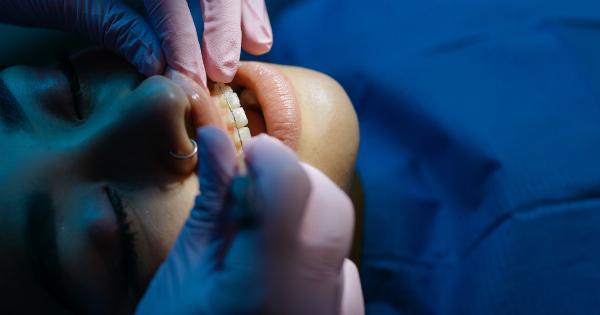Vaginismus, the involuntary contraction of the muscles surrounding the vagina, can make penetration impossible, painful, or uncomfortable.
It can affect women of any age, and it is estimated that at least 5% of women worldwide suffer from this condition. In this article, we will discuss the causes, symptoms, and treatment options for vaginismus and other conditions that can cause blocked entries to the vagina.
Causes of Vaginismus
The causes of vaginismus are not always clear, and it can be a combination of physical, psychological, and emotional factors. Some of the known causes of vaginismus are:.
1. Trauma or abuse
Women who have experienced sexual trauma or abuse may develop vaginismus as a result.
The body’s natural response to trauma is to go into a state of “fight or flight,” which can cause the muscles around the vagina to tense up, making penetration painful or impossible.
2. Anxiety or fear
Women who are anxious or afraid of sex may also develop vaginismus. This can be due to a lack of sexual experience, negative cultural or religious beliefs about sex, or fear of pain or embarrassment.
3. Physical conditions
A variety of physical conditions can cause vaginismus, including endometriosis, ovarian cysts, and fibroids. These conditions can cause pain or discomfort during sex, which can trigger the body’s defense mechanism of muscle tightening.
Symptoms of Vaginismus
The most common symptom of vaginismus is the involuntary tightening of the vaginal muscles, which can make penetration painful or impossible. Other symptoms include:.
1. Pain or discomfort during sex
Women with vaginismus may experience pain, burning, or stinging during intercourse due to the tightened muscles.
2. Difficulty inserting tampons
Women with vaginismus may also have trouble inserting tampons or undergoing gynecological exams due to the constriction of the vaginal muscles.
3. Anxiety or fear
Women with vaginismus may feel anxious or fearful about sex, which can lead to avoidance of sexual activities altogether.
Treatment Options for Vaginismus
The good news is that vaginismus is treatable, and women can regain their ability to have pain-free intercourse. Some of the most effective treatment options for vaginismus are:.
1. Pelvic floor muscle therapy
Exercises that strengthen the muscles of the pelvic floor can help women with vaginismus gain control over their vaginal muscles and reduce episodes of involuntary muscle tightening.
2. Cognitive-behavioral therapy
CBT is a form of psychotherapy that can help women overcome the anxiety and fear associated with sex and develop coping strategies to manage the symptoms of vaginismus.
3. Gradual desensitization
This treatment involves gradually exposing women with vaginismus to sexual activities, such as touching and penetration, in a controlled and safe environment.
This can help desensitize the body to the fear and anxiety associated with sex and reduce episodes of involuntary muscle tightening.
Other Conditions That Can Cause Blocked Entries to the Vagina
In addition to vaginismus, there are other conditions that can cause blocked entries to the vagina. Some of these conditions include:.
1. Vaginal atrophy
Vaginal atrophy is the thinning, drying, and inflammation of the vaginal walls that can occur during menopause or due to hormonal changes. This can cause pain and discomfort during sex and make penetration difficult.
2. Vulvodynia
Vulvodynia is a chronic pain condition that affects the vulva and can cause pain and burning during intercourse. The exact cause of vulvodynia is unknown, but it is believed to be related to nerve damage or irritation.
3. Interstitial cystitis
Interstitial cystitis is a chronic bladder condition that can cause pelvic pain, discomfort during sex, and an increased frequency of urination. It can make penetration painful or impossible due to the sensitivity of the pelvic area.
Conclusion
Blocked entries to the vagina can be caused by a variety of physical, psychological, and emotional factors, including vaginismus, vaginal atrophy, vulvodynia, and interstitial cystitis.
Women who experience pain or discomfort during sex should talk to their healthcare provider to determine the underlying cause and explore treatment options.

























